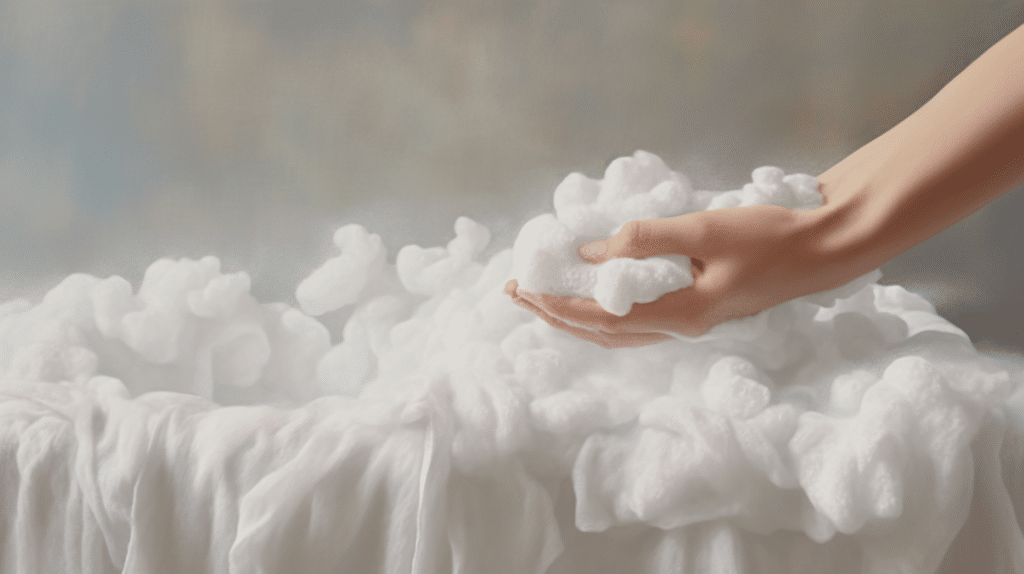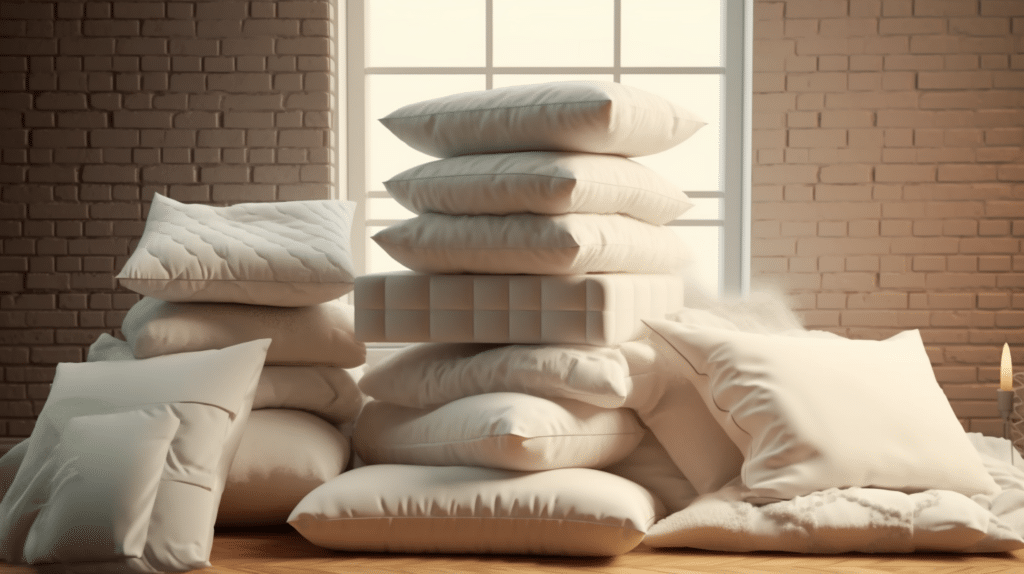Are you tired of constantly replacing your bedding? Do you want to learn how to properly care for your sheets, comforters, and pillowcases so they last longer? Look no further than this guide on Bedding Care 101. By understanding the different types of materials used in bedding, as well as proper washing and drying techniques, removing stains and odors, dealing with allergies and irritations, protecting from wear and tear, storage and organization tips, and long-term maintenance strategies – you’ll be able to keep your bedding looking fresh for years to come.
It’s easy to overlook the importance of proper bedding care when it comes to maintaining their longevity. But by implementing simple yet effective techniques outlined in this article, not only will you save money on replacements but also ensure a comfortable sleeping experience every night. So let’s dive into the world of bedding care together!
Understanding Different Types of Bedding Materials
You may be wondering what types of bedding materials are available to you, and how each one affects your sleep experience. Well, there are plenty of options to choose from! Cotton is a popular choice because it’s soft, breathable, and durable. It’s also easy to care for and comes in a variety of styles. However, if you’re looking for more eco-friendly options, bamboo or linen might be a better choice.
Bamboo is becoming increasingly popular because it’s sustainable and grows quickly without the need for pesticides or fertilizers. It’s also naturally hypoallergenic and moisture-wicking, making it ideal for those with allergies or who sweat while sleeping. Linen is another eco-friendly option that has been used for centuries. It’s made from flax fibers and is known for its durability and breathability. While it can be more expensive than cotton, it lasts longer and becomes softer with every wash.
If cost is a concern, there are still plenty of choices that won’t break the bank. Microfiber is an affordable option that mimics the feel of cotton but doesn’t wrinkle as easily. Polyester blends can also be cost-effective choices that offer durability and easy care without sacrificing comfort. Ultimately, choosing the right bedding material comes down to personal preference and budget constraints – so take some time to explore your options before making a decision!
Washing Techniques for Cotton Bedding
After a long day, tossing your favorite cotton sheets in the washing machine and adding a splash of detergent can feel like a refreshing start to a good night’s sleep. However, did you know that washing cotton bedding in hot water can cause shrinkage and damage to the fibers? It’s best to stick with warm or cold water settings to avoid any potential issues.
Another thing to consider is whether or not to use fabric softener. While it may seem like a good idea for achieving extra softness, fabric softener can actually leave behind residue that can take away from the absorbency of your bedding. If you do choose to use fabric softener, be sure to use it sparingly and avoid using it on towels or other items that need maximum absorbency.
When it comes time for drying your cotton bedding, avoid high heat settings as this can also cause shrinkage and damage. Instead, opt for low or medium heat settings and remove the bedding promptly once dry. Taking these simple steps will ensure that your cotton bedding stays looking its best for years to come!
Drying Tips for Silk Bedding
For a luxurious and delicate material like silk, it’s important to be mindful of the drying process. After washing your silk pillowcases, avoid using the dryer as high heat can damage the fibers and cause them to shrink. Instead, opt for air drying techniques.
The best way to air dry your silk bedding is by laying it flat on a clean towel or hanging it up to dry. If you choose to hang it up, make sure not to use clothespins or hangers that could create unsightly creases in the fabric. Gently reshape the bedding while it’s still damp so that it maintains its original shape.
It’s also important to keep in mind that direct sunlight can fade the color of your silk bedding. So, try not to expose it directly under harsh sunlight when drying. It’s recommended that you place your silk bedding in a shaded area with good ventilation and air flow until completely dry. These simple tips will help maintain the quality of your luxurious silk bedding for years to come!
Removing Stains and Odors

To keep your silk pillowcases looking and smelling fresh, it’s crucial to know how to remove stains and odors. There are two main types of solutions you can use: natural and chemical. Natural solutions include using vinegar or lemon juice mixed with water to create a cleaning solution that is safe for silk. Simply dab the stain with the solution and let it sit for a few minutes before rinsing with cold water. Chemical solutions, on the other hand, should be used sparingly as they can damage the delicate fibers of silk.
If you prefer DIY stain removal techniques, there are several options available. One popular method involves mixing baking soda and water into a paste and applying it directly onto the stain. Let it dry overnight before brushing away any residue in the morning. Another effective technique is using hydrogen peroxide mixed with dish soap to treat stains. Apply this mixture onto the affected area and let it sit for 20-30 minutes before rinsing with cold water.
When dealing with odors, try airing out your silk bedding by hanging them outside in a shaded area or near an open window for a few hours. You can also sprinkle baking soda over your bedding to absorb any unpleasant smells before vacuuming it away after 30 minutes or so. Avoid using fabric softeners when washing silk as they leave behind fragrance that may not mix well with the natural scent of silk itself. With these tips in mind, you’ll be able to maintain your luxurious silk bedding for years to come!
Dealing with Allergies and Irritations
If you’re experiencing allergies or irritations, silk pillowcases can be a great choice for you. Silk is hypoallergenic and doesn’t harbor dust mites like other materials do. This means that it’s less likely to trigger allergic reactions or skin irritations.
However, if silk isn’t an option for you, there are other ways to deal with allergies and irritations in your bedding. One of the easiest home remedies is to wash your bedding regularly in hot water. This helps kill any allergens or bacteria that might be lurking in your sheets and pillowcases.
Another option is to choose hypoallergenic bedding made from materials like bamboo, cotton, or microfiber. These materials are breathable and gentle on the skin, making them a great choice for people who are sensitive to certain fabrics. By taking these steps, you can create a more comfortable sleeping environment that supports better health and well-being overall.
Protecting Your Bedding from Wear and Tear
You want your bedding to last as long as possible, so it’s important to take steps to protect it from wear and tear. The first step is to invest in high-quality sheets, pillowcases, and comforters that are made with durable materials. Look for bedding that is designed to withstand frequent washing and use. Additionally, consider using mattress protectors and pillow covers to prevent stains, spills, and allergens from damaging your bedding.
Another way to protect your bedding from wear and tear is by following proper care instructions. Always wash your bedding in cold water on a gentle cycle, and avoid using harsh detergents or bleach. Use a low heat setting when drying your bedding, or hang dry if possible. Avoid over-drying or ironing your sheets or comforter as this can cause them to shrink or lose their shape.
Be mindful of how you use your bedding day-to-day. Avoid eating or drinking in bed as spills can damage the fabric and attract insects like bed bugs. Don’t sit on the edge of the bed repeatedly as this can cause sagging or tears at the seams over time. Instead, try sitting on a chair nearby if needed. By taking these simple steps to protect your bedding from wear and tear, you’ll extend its lifespan while also keeping it clean and comfortable for years to come.
Storage and Organization Tips
Now that you have invested in high-quality bedding, let’s talk about how to keep it organized and easily accessible with these simple storage tips. One of the best ways to maximize space is by using under-bed storage containers. These containers are perfect for storing extra blankets, pillows, or seasonal bedding. They not only keep your bedding clean and protected but also free up valuable closet space.
When choosing the right containers for your bedding, opt for ones made from breathable materials like cotton or linen. Avoid plastic bins as they can trap moisture and lead to mold growth. Additionally, make sure the containers are sturdy enough to support the weight of your bedding without collapsing or tearing.
Lastly, label each container clearly so that you can easily identify its contents without having to open it every time you need something. This will save you time and effort in the long run while also keeping your bedding neat and tidy. With these simple storage tips, you can ensure that your high-quality bedding stays in top condition for years to come!
Long-Term Maintenance Strategies
To keep your bedding in top condition for years to come, it’s important to regularly wash and rotate your sheets. However, there are also some long-term maintenance strategies that can help extend the life of your bedding. One key aspect is proper bedding storage. When not in use, store your sheets and blankets in a cool, dry place away from direct sunlight and moisture. This will prevent mold growth and discoloration.
Another consideration for long-term bedding maintenance is choosing sustainable options. Look for organic cotton or bamboo sheets, which are made without harmful chemicals and have a smaller environmental impact than traditional cotton. Additionally, invest in high-quality pillows with removable covers that can be washed separately from the pillow itself. This not only extends the life of the pillow but also allows you to clean it thoroughly.
Consider using mattress protectors to prevent stains and spills from damaging your mattress over time. These protectors can be easily washed along with your bedding during regular cleaning cycles, ensuring that your mattress stays fresh and clean for longer periods of time. By following these simple long-term maintenance strategies, you can enjoy luxurious and comfortable bedding for years to come while reducing waste and promoting sustainability.
Conclusion
In conclusion, taking good care of your bedding is essential if you want it to last for a long time. Understanding the different types of materials and their specific washing and drying techniques can help prevent damage and extend the lifespan of your bedding. Be sure to remove stains and odors promptly, especially if you have allergies or sensitivities.
Protecting your bedding from wear and tear can also be done by investing in high-quality products, using protective covers, and rotating your sheets regularly. When storing your bedding, make sure it’s clean and dry before folding or rolling it up to avoid mold growth or musty smells.
By following these tips for cleaning, maintaining, protecting, and storing your bedding properly, you’ll not only enjoy a comfortable night’s sleep every time but also save money on replacements in the long run. Happy sleeping!


